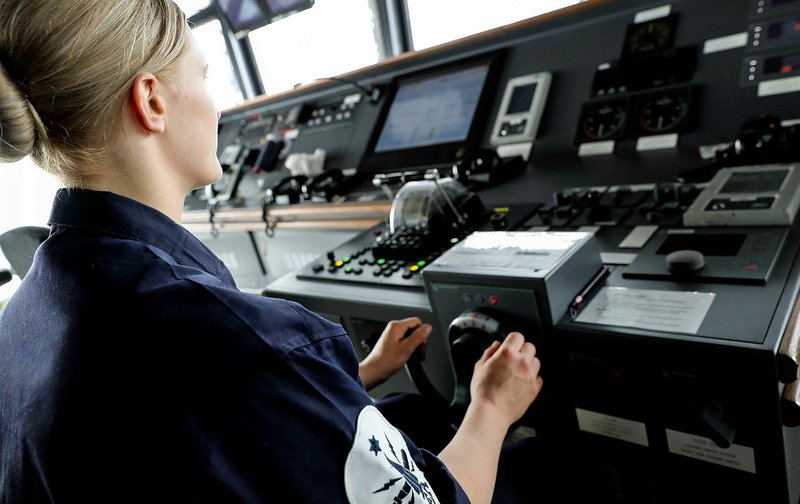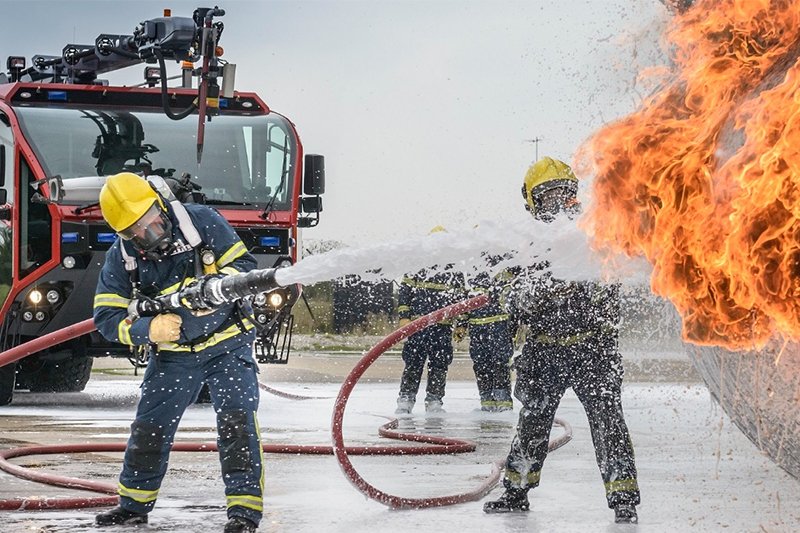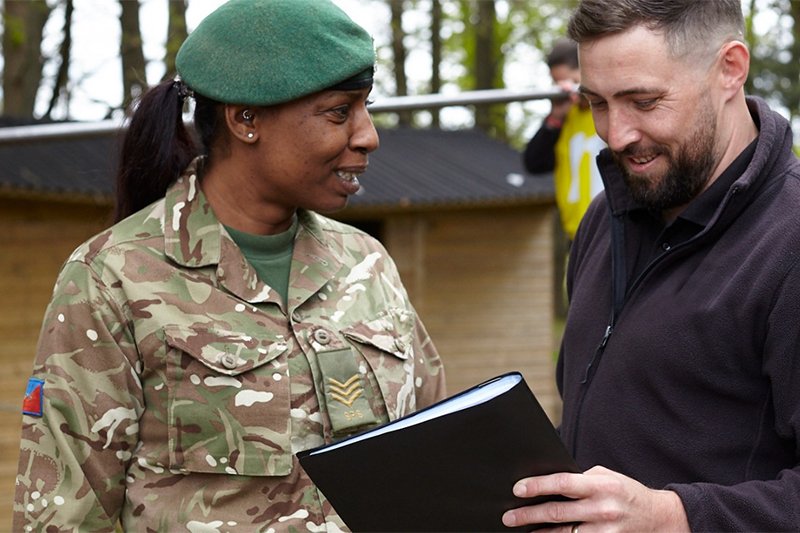Training Together: Unlocking Educational Excellence through Military and Industry Collaboration (Studio)
Brought to you in partnership with Capita
A collaborative approach incorporating feedback from a wide range of stakeholders is essential for military training.
Engaging with partners from the earliest stages of developing training programmes is crucial, even at the bidding stage, said Ade Morley, business performance director in the Defence and National Preparedness client group within Capita Public Sector.
Such a partnership approach is a core focus for Capita, a leading provider to the UK Armed Forces through efforts such as Project Selborne, which delivers shore-based training for sailors and marines; its work with the RAF through Astra Training; and its long-term partnership with the British Army.
Capita is also part of Omnia Training, the Raytheon-led consortium currently bidding for the Army Collective Training System.
Stakeholder Engagement
Before joining Capita, Morley served in the Royal Marines (RMN) and was Commandant Training Management Group (TMG) when the Project Selborne contract was signed in 2021. He has, therefore, seen the collaborative process from both sides: customer and provider.
Morley noted that Capita’s team took a collaborative approach right through the evaluation and competitive dialogue process, working closely with the RN to ensure its bid fully met all training requirements. It took the same approach through the mobilisation process, ensuring that key individuals from the bidding process remained involved to deliver on the navy’s stated goals.
‘It’s all about listening to the customer, learning what they want and actually need, and then developing innovative solutions to meet that requirement.’

This collaborative approach delivers tangible benefits in training programmes. For example, Team Fisher – the Capita-led group that delivers Project Selborne – works directly with its military customers and other partners to integrate stakeholder feedback into training initiatives.
The aim is to ensure better-trained personnel reach the front line faster, with naval command as the key customer. Officers and ratings from ships, air squadrons, and commando units are both customers and recipients of the training delivered by Team Fisher.
‘We ensure that the frontline commands have a voice back into the governance process so they’re able to feed back on the quality of the training,’ Morley said.
This is about much more than monitoring key performance indicators (KPIs) or meeting a volumetric target. Rather, it’s about ensuring quality in course material, training structure, and anticipated outcomes.
‘That’s the same whether you’re delivering training to the Royal Navy or delivering recruits to the army or performing any type of military training.’
Such collaboration is central to all training programmes. For example, the Defence Fire and Rescue Project (DFRP) sees Capita deliver a range of firefighting training services for the Ministry of Defence (MoD) from the Defence Fire Training Unit based at the Fire Service College in Moreton in Marsh.
This training fully aligns with the Defence Systems Approach to Training (DSAT), which governs MoD training. Therefore, it is crucial to maintain good relations with all stakeholder groups.
One of the unique advantages of DFRP, for instance, is the ability of subject matter experts from industry and the military to work hand-in-glove on delivering training material. Trainers are free to approach the course design department with suggestions, ideas and improvements, enabling the development of high-quality, cost-effective and relevant subject matter.
For instance, the Defence Fire Training Unit (DFTU) is undertaking an ambitious plan to integrate XVR incident command training simulator software into the Further Training (promotion) courses run under DFRP. To successfully roll out and expedite this project, Capita has ensured regular engagement with military partners and delivery staff, ensuring that delays are minimal.

Andy Collins, training director for Capita Fire and Rescue, said the DFRP stakeholder group is broad, and it’s vital to work with all aspects.
‘As well as the technical and delivery content, there are also regulatory requirements to consider,’ Collins said.
It is important to ensure that all stakeholders are engaged ‘to make sure that the training delivered meets legislation and is also effective from a defence perspective.’
Cultural Shift Through Training
Military training goes beyond individual tasks and skills. It should also deliver wider benefits, driving cultural shifts through targeted behavioural and leadership training. This can help uphold ethical standards, promote inclusivity, and harness leadership skills that align with military needs today – as well as wider societal values.
Culture change has been central to Project Selborne from the beginning, said Morley, and will be a major focus across all four of its three-year transformation periods.
From the beginning, there has been an effort to ensure that all tier one partners – as well as their military stakeholders – are ‘clearly on the same page in terms of culture and behaviour’, he said, from the highest levels to the sailors or marines and instructors participating in the training.
He said it is important to retain the culture change element because of a natural rotation in personnel, ensuring that new recruits are imbued with the same standards.
‘You’ll start to get trainees coming back as instructors or instructors coming back for the second time, and consistency of culture will pay dividends,’ he added.
Capita is embracing technological innovation to deliver this cultural shift. For example, while classroom-based learning remains the mainstay of defence education, there is a recognition that the intelligent application of interactive digital sessions, gamification and virtual reality (VR) can help to engage younger trainees.
In DFRP, for instance, learning material is presented to learners through various formats in the MoD’s virtual Defence Learning Environment (DLE). Depending on needs, this can include new and innovative technologies alongside a more traditional approach.

Traditionally, defence fire and rescue leadership training has very much been a hierarchical process, said Collins, with trainers passing on their knowledge and experience to the more junior ranks, often individually.
However, using incident command software such as XVR will enable an individual’s decision-making to be viewed and analysed by peers and assessors, ‘making the process more efficient, amplifying the learning taking place, and provoking discussion’.
Innovative Digital Learning
Digital technology supports the delivery of a personalised and flexible training approach that places the person at the centre, adapting to the needs of a diverse workforce.
For example, DFRP has invested in Articulate Rise 360 and Storyline 360 software, changing the look and feel of revision and summary sessions in Trainee Firefighter and Maintenance of Competence lessons. These can be loaded directly onto the Moodle learning platform, providing a more personalised, improved user experience.
DFRP, Selborne and other programmes have also embraced the potential of VR. In DFRP, for instance, it can support the development of delegates attending Compartment Fire Behaviour Training (CFBT) using the FLAIM VR learning system.
The precise deployment of any such VR or artificial intelligence (AI) product is shared and discussed with relevant stakeholders before use, underscoring the importance of close collaboration.
Morley said that some VR was deployed in the first transformation period of Selborne, and there are also efforts to expand the deployment of iPads for trainees. He added that there is ongoing work with ecosystem partners to determine how generative AI can be used to build and deliver bespoke training pathways.
Ultimately, close collaboration with stakeholders will help determine the precise use and impact of technology, Morley noted, as well as the evolution of military training more broadly.
‘There is no templated solution – it’s going to be course-by-course and branch-by-branch, very much depending on customer needs.’
- Related article: Enhancing Military Training Through Digital Technology
More from Studio
-
![Intelligence advantage: How real-time GEOINT is reshaping military decision-making (Studio)]()
Intelligence advantage: How real-time GEOINT is reshaping military decision-making (Studio)
In today’s contested operational environment, adaptability is key. The new Geospatial-Intelligence as a Service (GEO IaaS) solution from Fujitsu and MAIAR empowers militaries by enabling intelligence advantage, combining advanced technology with human expertise to deliver actionable insights.
-
![Enhancing Military Training Through Digital Technology (Studio)]()
Enhancing Military Training Through Digital Technology (Studio)
Digital technologies offer huge opportunities for defence training. However, militaries must adopt an agile approach, placing the needs of their organisations and personnel at the centre of their efforts.
-
![Layered Defence: How new technologies are enhancing armoured vehicle survivability and manoeuvrability (Studio)]()
Layered Defence: How new technologies are enhancing armoured vehicle survivability and manoeuvrability (Studio)
As modern threats evolve, armoured fighting vehicles face a new era of challenges, from loitering munitions to kinetic energy projectiles. Advances in active, passive, and reactive protection systems are crucial to ensuring battlefield dominance, freedom of manouver and vehicle survivability.
-
![Seizing the Future: The Imperative for Militaries to Master AI and Forge Strategic Alliances]()
Seizing the Future: The Imperative for Militaries to Master AI and Forge Strategic Alliances
The current pace of innovation demands a new strategy for success, focusing on developing technology to meet specific defence goals and ensuring collaborative efforts.
-
![Turning the Hiroshima Accord into Action: Enhancing UK-Japan Defence Collaboration (Studio)]()
Turning the Hiroshima Accord into Action: Enhancing UK-Japan Defence Collaboration (Studio)
The UK-Japan strategic partnership leverages joint defence initiatives, advanced technologies, and SME integration to enhance military capabilities, foster innovation, and ensure regional and global stability through collective action and effective project management.
-
![Why we need to radically rethink how we plan for a future of unprecedented technological change (Opinion)]()
Why we need to radically rethink how we plan for a future of unprecedented technological change (Opinion)
Technological advances are revolutionising defence, outpacing our outdated political and procurement systems. Fujitsu's Keith Dear argues that we need a radical rethink, adopting a 'theory of winning' to pre-emptively develop essential technologies and seize opportunities, ensuring security and stability in an unpredictable world.



























